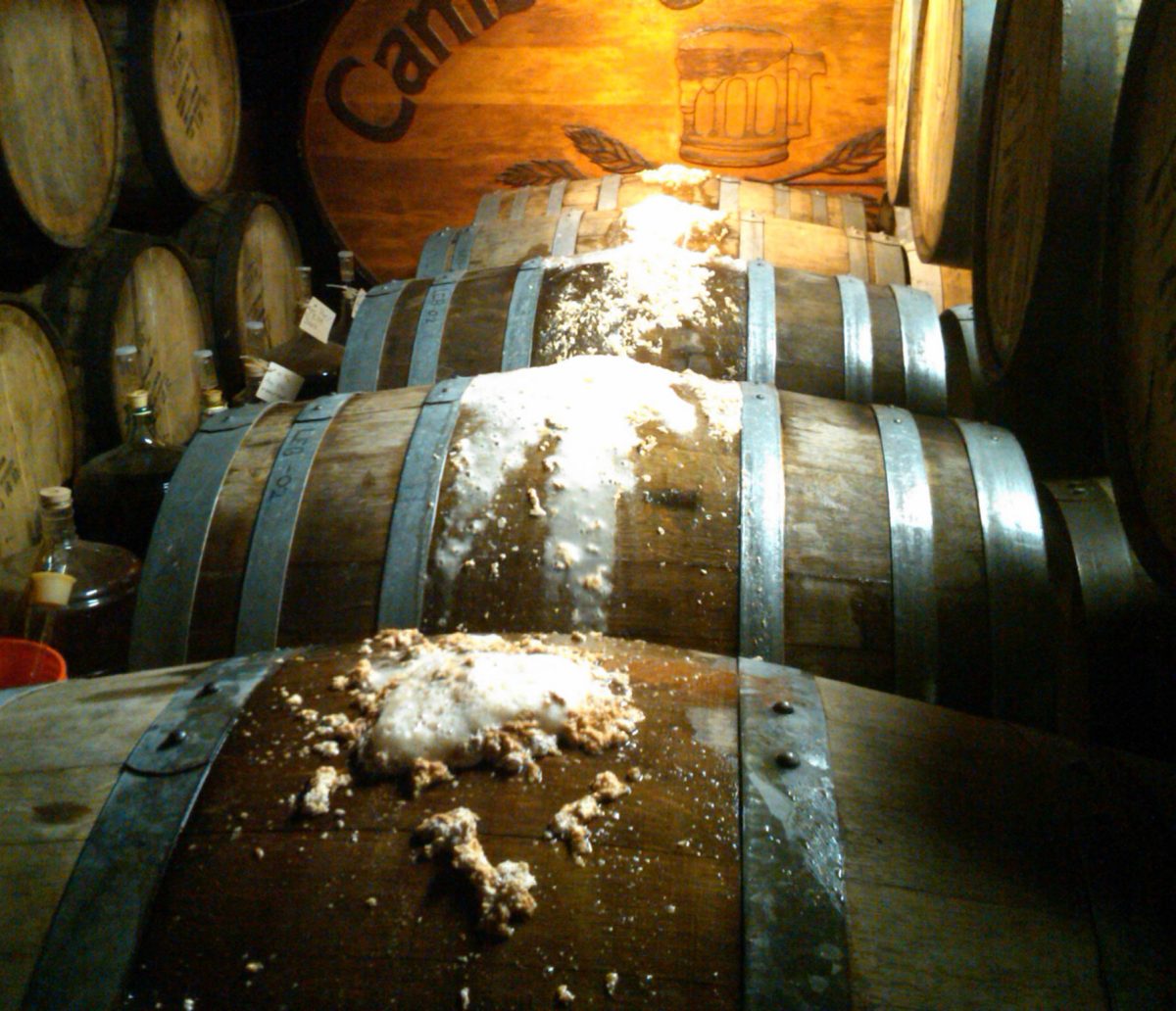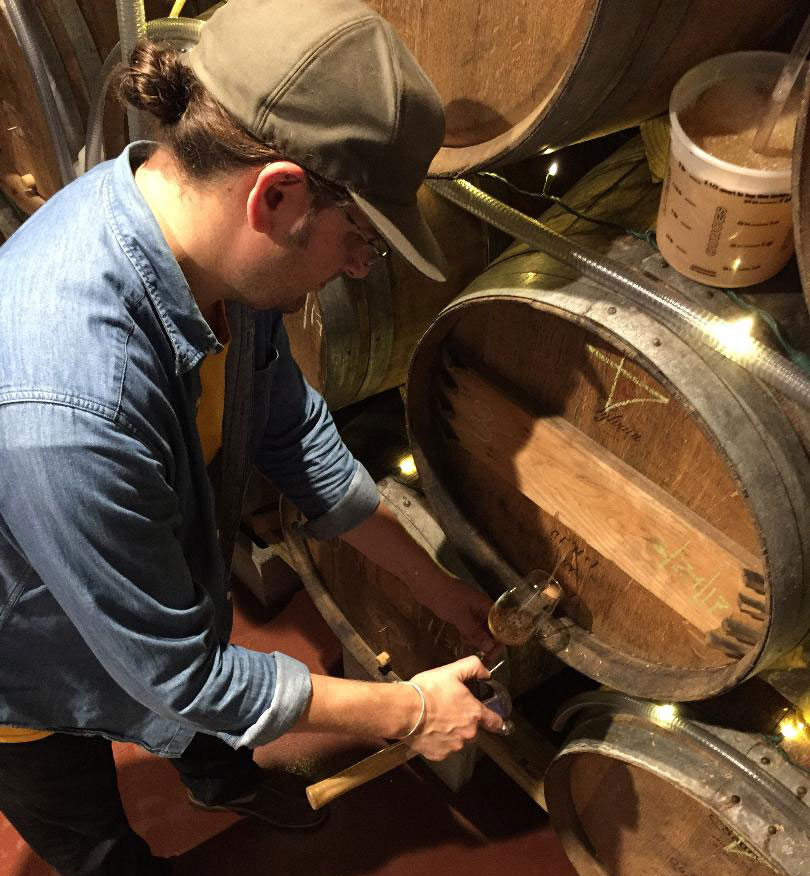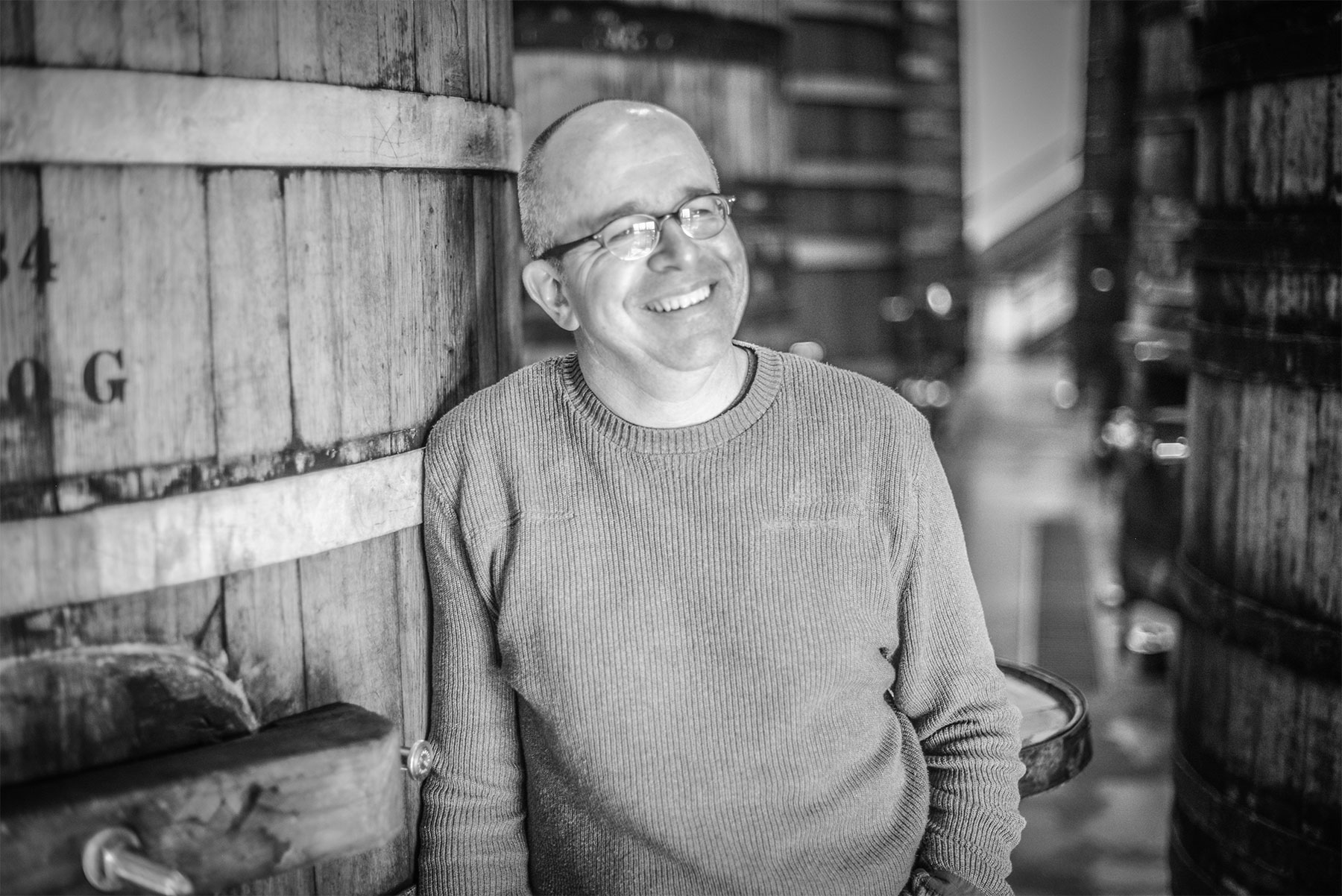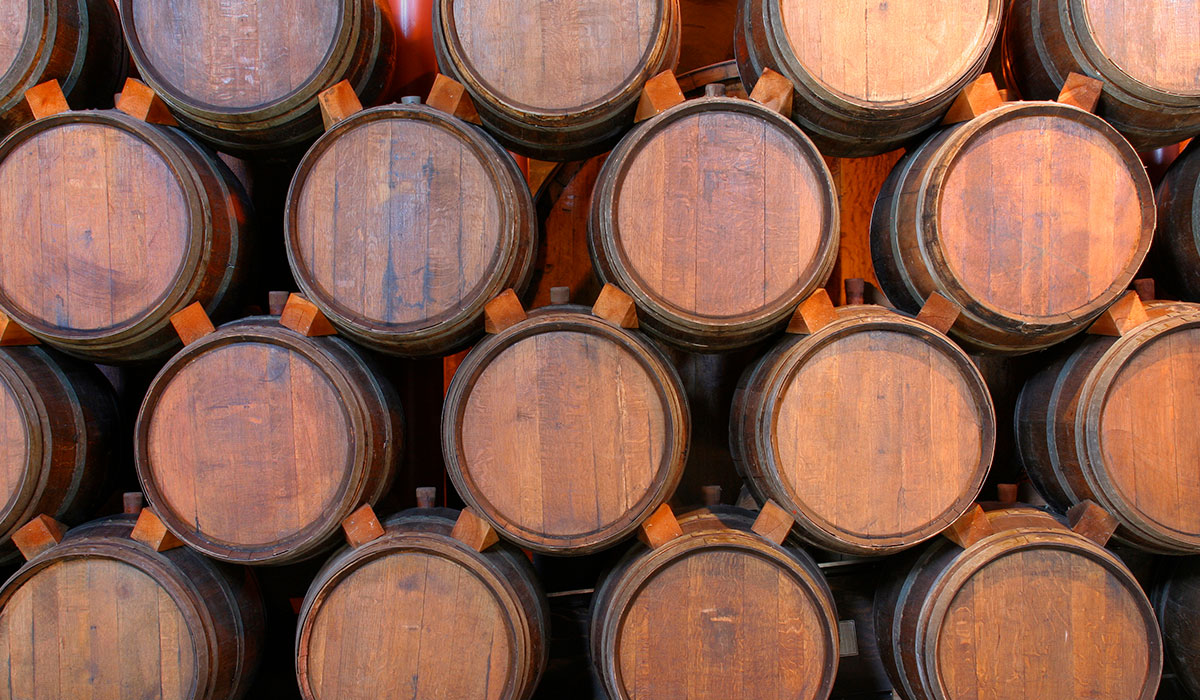Solera brewing is a beer-making process that dates back hundreds of years. In the last decade or so, it’s a method a number of American brewers hungry for experimentation, complexity and speed are beginning to explore.
The creative, efficient Solera system of mixed fermentation has been in use since it first was devised by Portuguese sherry producers in the late 1700s. Now it also is being used for making port, whiskey (think Glenfiddich 15-Year-Old Solera), brandy, balsamic vinegar, and, more recently, American craft beer.

The Solera system, also called “fractional blending,” was first used in a U.S. craft brewery in 2003 at Cambridge BrewingOpens in new window, the brainchild of renowned Head Brewer Will Meyers. Meyers ironically got the idea during a conversation over a beer with a friend who was the owner and winemaker at Sutton Cellars vineyard.
Meyers describes his classic approach by relating it to the original sherry system but is using it for beer (parentheses added): “essentially a number of casks that contain identical liquids of consecutive ages. In the case of sherry (or beer), a quantity of the style is drawn off at intervals throughout the year, and the cask is refreshed with a slightly younger wine (or other liquid) of the same style. The younger wine (or beer) will gradually take on the character of the older wine (or beer), and after several months, the wine (or beer) in the cask becomes virtually indistinguishable from what it was before.”
(READ: The Evolving Role of Women’s Contributions to Beer)
Aged Qualities in a Fraction of the Time
For sour beer, a single stage system now is used by most Solera breweries and has been found to be an excellent way to continuously make the beer more quickly than conventional barrel aging, with greater depth, and with a wild culture mixture that slowly evolves over time. The tapped beer is replaced by the house base beer which is brewed separately and moved to the Solera.
Basically, the untapped part of the Solera cask acts as a jump starter, like the sourdough bread starter that many families have used and passed around. (We called our sourdough starter Herman.)
Jason Kahler, the brewmaster and co-owner of Solera Brewing in Parkdale, Oregon, tells us, “My intention was to have a constant flow of complexly layered, acid-forward beers without the long wait. Initially, I was thinking of the mixed cultures residing in the barrels. It was more of a way to keep bacteria and yeast alive in barrels that I wanted to duplicate, but quickly realized that not only was this a simple way to feed and keep the critters active, but also produce a beer that had some aged qualities that could be achieved in a fraction of the time.”
(READ: Understanding the Three-Tier System: Its Impacts on U.S. Craft Beer and YouOpens in new window)
Boston Beer uses a Solera process to make their Kosmic Mother Funk (KMF) series. Jennifer Glanville, the brewer at Boston Beer, has three 130 barrel foeders used for making the various KMF beers, with the one for their Grand Cru aging at least 24 months before tapping. Glanville asserts that, “The process gives a different depth of flavor than with blending.”
Nathan Zeender, the head brewer at Right Proper Brewing in Washington, DC, notes that, “We are able to get the finished beer much more quickly. The beer also continues to evolve and develop its own character.”
Classic Solera Brewed Beers
Records show that a Solera-type brewing process has been used in the past for brewing beer, but not for many years. One such beer was the classic, but sadly no longer made, Gale’s Prize Old Ale. Another is the famous Burton Ale from the Ballantine Brewery. The oldest Solera beer barrel still in use is a 200+ years old Walloon Old Ale barrel, first used in 1806. The cask is owned and has been maintained by the Gedda Family in Sweden and is tapped once every two years.
Since Cambridge’s then-innovative system for brewing beer, quite a number of other breweries have developed their own distinctive Solera system, with variations to fit each of their unique needs. These range from widely-distributed craft breweries such as New Belgium to extremely small enterprises like Duncan’s Abbey with only four souring barrels.
(READ: 12 Beers of ChristmasOpens in new window)
Meyers created his very traditional Solera brewing system in the low-ceilinged dirt basement of the brewery’s refurbished 125-year-old mill. He is dogmatic about keeping it traditional and “remaining true to the Solera spirit.” Their Solera has grown to 15 former Bordeaux and Burgundy wine barrels of about 60 gallons each with the addition of five barrels in 2008 and another five in 2015.
Essentially now Cambridge has a Solera and two nurseries called criaderas. Each year, the Solera is tapped only once to make their Cerise Cassée, a sour ale made with tart cherries. The Solera, usually tapped in the late autumn, produces about 200-250 gallons of Cerise Cassée. Meyers hopes that the increased Criadera size will allow a limited bottled release.
Beers Made Using “Aging and Time”
Brewing with a Solera system is more an art than a science. The barrels in the system used for blending age at different rates depending on elements such as the aggressiveness of the cultures in the barrels or foeders, weather, temperature and other factors. Those cultures and the wort they are working with can be modified over time by changing the malt profile, re-inoculating or changing the culture mix, modifying the fermentation and temperatures, determining when time is ripe to draw from the foeders, and how these various factors work together in blending a final product, all of which only comes from experience.
“All batches are related to one another and the latest is related to the first.” Chase Healey, American Solera
Two relatively new breweries have Solera in their name, American Solera in Tulsa, Oklahoma, and Solera Brewing in Parkdale, Oregon. Both are among numerous breweries using modifications of the traditional Solera system to make sour ales.
Chase Healey, the brewer and owner of American SoleraOpens in new window, says he is simply using “aging and time” to make their beers. He likes that, “All batches are related to one another and the latest is related to the first.”
Each Solera batch is aged for four to six months and then drawn down by one-half to two-thirds and fills 20-30 barrels. Healey checks to see what is available for mixing or blending such as peaches, berries or grapes and sometimes dry hops the resulting barrels. Refilling the Solera with his base farmhouse beer he describes as “pulling and replenishing.”
Solera Brewery is Built on Experimentation
Solera BreweryOpens in new window has a spectacular view of Mt. Hood towering over its back patio. Brewmaster Kahler relates that, “One of the things that attracted me to this technique was all the years I’ve spent brewing in other breweries the same damn beers day in and day out. I’m not sure I could ever do that kind of brewing again. Experimentation has always been the goal of this brewery. I think many of our customers understand our philosophy.”
(READ: A Sour Pickle in American Brewering: Can Brewers Better Define this Style?)
At present, Solera Brewery has 25 barrels stacked two high using chocks. Kahler’s goal is “not to duplicate but to create.” He artfully relates that, “The wort that’s used to replace what has been drawn out is dictated by the remaining beer in the barrel. Does it need the acidity cut? Does it need more acid, color, or body?”
Kahler describes the draw on each barrel, saying, “The barrel will tell you. I’ve had barrels that were in their first generation for three or four years, while others as little as three months. It also depends greatly on what you plan to do with the beer. Are you blending with it or serving it straight?”
“Consistently Delicious … Not Consistently the Same”
Zeender, like many others, started with Solera brewing as a homebrewer. When Zeender set up the Right Proper brewery he was able to acquire three 38-barrel foeders. Two of the foeders are used for souring and one for other beers.
“The original mixed fermentation culture was derived from two saison yeasts, two types of Brettanomyces yeasts, and a Lactobacillus strain,” Zeender says. “Brettanomyces is the focus, and it develops over time from months to years.”
Zeender’s two primary mixed fermentation beers are made in their own foeders. One is the flavorful Baron Corvo, a Rustic biere de garde, while the other is the White Bicycles Rustic Witbier. Both also are bases for other beers such as an aged farmhouse ale and a foeder beer on cherries.
(READ: Should We Wait in Line for Beer?)
The Solera beers, Zeender notes, are “consistently delicious but not consistently the same.”
Other brewers using modified Solera systems agree that their beers vary some due to the evolving yeasts, changing weather, and a host of other factors. Often customers truly enjoy checking the small variability of each handcrafted version.
How frequently Zeender’s foeders are tapped depends on demand but usually every four to six weeks. About one-half to two-thirds of the beer is removed on average and refilled from a base beer brewed in stainless steel tanks before being subjected to the alchemy of the mixed fermentation colony residing in the oak foeders.
Solera Method at Duncan’s Abbey and Fermentery Form
Two small Solera breweries have interesting wrinkles with their system. Duncan’s Abbey is a local brewery in an 1890s building in Tarrytown, New York, at the New York end of the Tappan Zee Bridge. It has a mere four souring barrels, stored in the building’s old stone cellar, which are used for the Solera. Owner and Brewer Justin DiNino believes, “People are looking for originality and these are unique.”
DiNino also believes in brewing using only local ingredients including hops from Tarrytown and the nearby area. More intriguing is his local yeast. Natural wild yeasts, that vary each year, are captured in the spring and fall in two half barrels placed outside the brewery. After fermenting to a desirable alcohol level, depending on how active the yeasts are, these barrels are tapped by one-third to one-half and are racked and the Solera refilled. The results tend to be fruity early and evolve to more acidic toward the end. If the yeasts dry the ale fully, DiNino may set aside a barrel for blending as part of their Flanders-style Rockefeller Red Ale.
(READ: Brewery Rescues Ugly Fruit from Landfills)

Philadelphia’s new Fermentery Form brewery opened this past July and with a different twist. Leaving the wort production to a contract brewery with spare capacity, they are a barrel-only brewery. According to Lead Fermentationist and jack-of-all-trades Ethan Tripp, like Zeender a former homebrewer, focusing solely on fermentation both saves a major expense and gives the brewery more flexibility and more time to experiment. The house mixed fermentation culture is about 10 years old dating back to those homebrewing adventures and the focus of he and his partners on balanced sour brews and barrel aging. Many of their beers are variations of farmhouse ales.
The brewery acquired 56 very old red, white and dessert wine oak casks in various states of disrepair and unusable for wine anymore. Essentially, Tripp, the jack-of-all-trades, added being a cooper to his other duties. The 56 barrels are arranged in two stacks with about 10-12 on each bottom and a similar amount on a second tier.
Tripp says there are about 20 Solera barrels on the bottom of the two stacks, a small variation from the classic Solera idea. They are filled from the second tier barrels as is traditionally done.
Only a few of the barrels have been tapped and refilled thus far, each time drawing about one-half to two-thirds of the contents and refilling from the second tier.
(READ: Explore 75+ Craft Beer Styles)
The Future of Solera Brewing?
The original American sour beer, New Belgium’s La Folie, first was made 20 years ago in their wooden foeders which, until three years ago, used a modified Solera system of partly emptying and refilling according to then Head Brewer Peter Bouckaert. The current forest of foeders has grown to 65 foeders ranging in size from a bit over 20 barrels to almost 190 barrels.
Two have been especially helpful in blending of their sour brews, the light lagers from foeder Oscar and the dark lagers from foeder Felix. Over these 17 years, there were various experimental changes such as using different malts and fermentation temperatures. The forest of foeders is in the care of Lauren Limbach, the Wood Cellar Director & Blender at New Belgium, who says, “My job is to keep the foeders happy.”

(READ: The History of the American Pale Ale)
Three years ago Limbach and her colleagues made a momentous discovery. They found that the benefit of brewing a relatively consistent beer using the modified Solera system could be achieved by completely emptying the foeder rather than a partial drawdown and refill. The cultures in the foeders evolved, reaching a steady state where the culture mixtures now reside in the wood and can regenerate themselves after being emptied. Essentially, the wood has developed a life of its own.
As Limbach describes it, “Over the years, we saw opportunities to improve overall flavor profile and found solutions to do so. This happened with years of testing and step by step working towards a new process. These foeders have had our cultures in them, penetrating the wood over many, many years … (this system) seems to be successful in our very specific need.” Ninety percent of the beer now is emptied for use and the remaining 10 percent is drained to minimize brewing maintenance issues. The foeders are then refilled within 12 hours and “within a week it has started reproducing.” Limbach proudly reports: “This absolutely works.”
The Solera process for brewing has been around for at least 200 years. For at least one brewery, it has evolved over time and perhaps others may able to follow the New Belgium lead. If not, the tried and true system still has numerous benefits and produces excellent beers.
CraftBeer.com is fully dedicated to small and independent U.S. breweries. We are published by the Brewers Association, the not-for-profit trade group dedicated to promoting and protecting America’s small and independent craft brewers. Stories and opinions shared on CraftBeer.com do not imply endorsement by or positions taken by the Brewers Association or its members.


Share Post